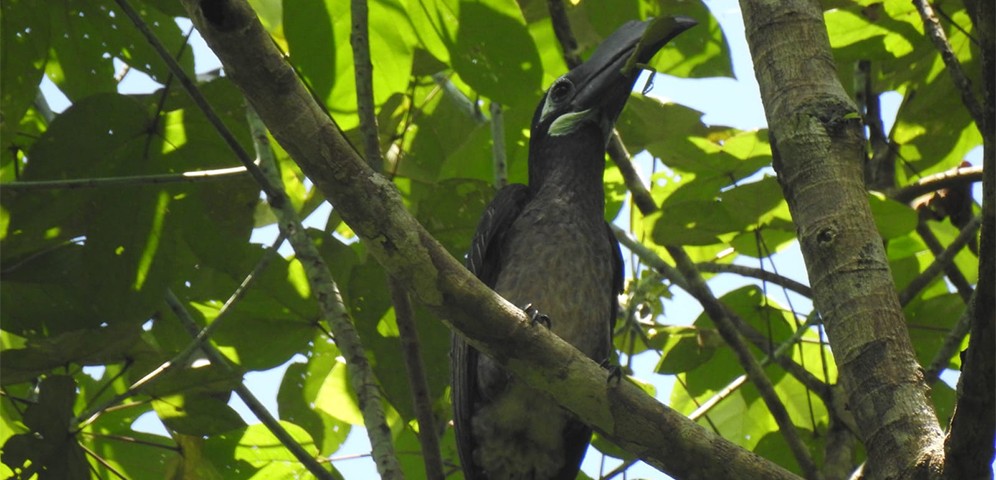07 Aug, 2023
PROTECT FORESTS, PROTECT HORNBILLS
BIODIVERSITY
Our Post-Release Monitoring (PRM) team from Camp Nles Mamse in the Kehje Sewen Forest, recently spotted a bushy-crested hornbill (Anorrhinus galeritus), known locally as enggang klihingan. This member of the hornbill family, found throughout Southeast Asia, was seen on the branch of a tree, munching on a praying mantis. Our team observed it from the forest floor below and took photos.
The bushy-crested hornbill prefers highly forested areas and often nests in the trunks of meranti trees (Shorea spp.). This bird is smaller than many other species of hornbill and is harder to spot in open forests, but is more visible in peat swamps and coastal locations.
The enggang klihingan eats figs (Ficus spp.) and other fruits with a high sugar and fat content, in addition to small insects. While they live in groups, the dominant pair will breed, and the entire group will take care of the nests and eggs. The largest group looking after one nest ever recorded included 12 individuals, who rotated through guarding the nest and going out to collect food. The entire nesting period takes about 90 days on average, including 30 days of egg incubation.
Unfortunately, the enggang klihingan is currently listed as a Near-Threatened (NT) species by the International Union for the Conservation of Nature (IUCN) and included in the Appendix II list by the Convention on International Trade in Endangered Species of Wild Fauna and Flora (CITES). This is because nearly 20% of its natural habitat was lost between 2000 and 2012. In order to protect this bird, we must safeguard its natural habitat by ensuring the sustainable use of forest resources.
Text by: Communications Team, BOS Headquarters, Bogor, West Java




